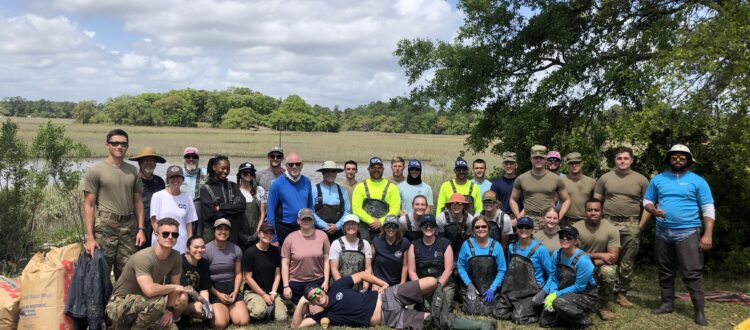Deep in the Pluff Mud: Tidal Creek Excavation with SCDNR SCORE
Have you ever ended up waist deep in the pluff mud? Intentionally? Our partners, the South Carolina Oyster Recycling and Enhancement (SCORE) team at the South Carolina Department of Natural Resources (SCDNR) and a group of volunteers spent three days in April 2024 moving pluff mud to help restore water flow to the marsh by creating a new tidal creek!
Why Dig a New Tidal Creek?

The historic Maryville neighborhood along the Ashley River (now referred to as Ashleyville) was a self-governed African American community in South Carolina, acting as a safe space for formerly enslaved African American families to live and work during an era of Jim Crow laws when African Americans were not welcome outside their own communities. The marsh along the Ashley River is a characteristic part of this neighborhood, but residents have noticed changes in the marsh and a decline in its health.
One resident and descendent of the prior Mayor of Maryville alerted the South Carolina Aquarium about dieback of the marsh that occurred after a drought back in 2012, turning the area into a mudflat. A combination of droughts, floods, and storms meant that water was no longer getting to the area. The residents of the historic Ashleyville community wanted to see the marsh restored to what it once was. The approximate location of the new tidal creek can be seen on this ArcGIS story map:
Restoration Requires Collaboration!
SCDNR, South Carolina Aquarium, Robinson Design Engineers, and Georgia Tech received grant funding through National Fish and Wildlife Foundation (NFWF) for this phase of the project to restore water flow to this area of the marsh by excavating new tidal creeks.
A project like this could be completed more quickly using heavy equipment, but in an effort to avoid creating destruction in an already sensitive ecosystem, the SCORE team and their partners are piloting a brand new approach of excavating tidal creeks by hand thanks to the volunteers!
Digging a new tidal creek by hand is a massive endeavor, but this was the SCDNR SCORE team’s second time around, since this is the second of three new tidal creeks in the area that will be excavated by 2025.
And luckily, they had a hard working team of partners and volunteers from Charleston from the South Carolina Aquarium, Charleston Waterkeeper, Trident Construction, the Sustainability Institute, and the Citadel.
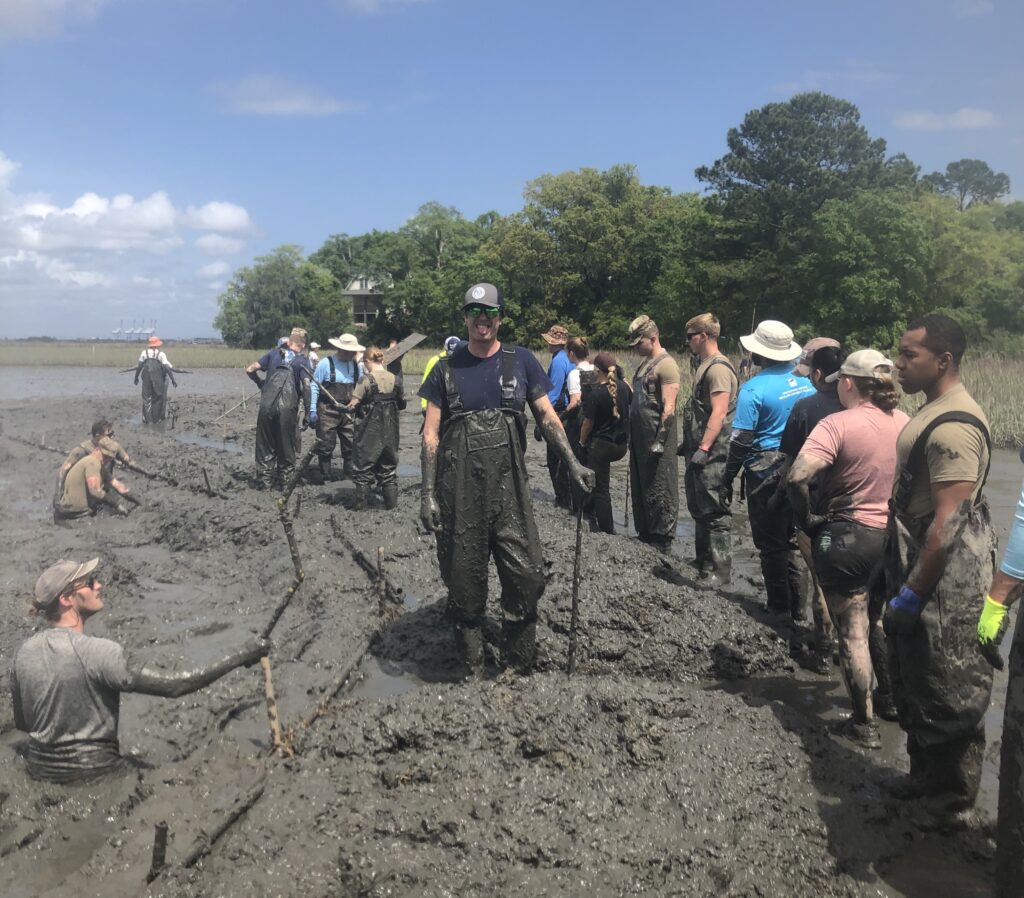

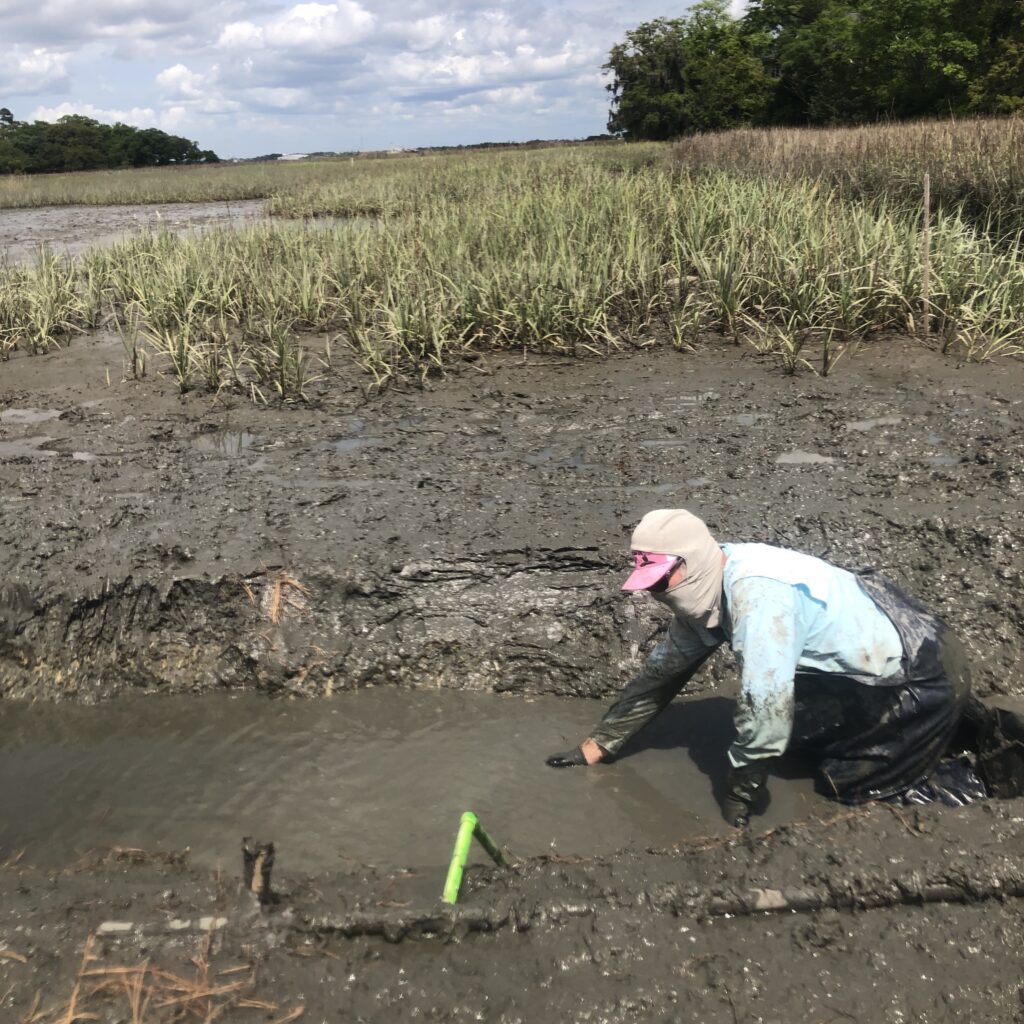
The Numbers
Eight DNR staff members and 67 volunteers spent 3 full days out in the sun this April moving enough mud to allow water to flow through a new tidal creek, restoring the hydrology to this area of the marsh.
The new tidal creek is 175 feet in length, 1.75 feet deep at the mouth, and 1 foot deep at the highest point upstream. Now that excavation is complete, the next step for the SCDNR SCORE team and volunteers will be to restore the marsh of the tidal creek and stabilize the banks by planting Spartina grass along the banks of the new creek.
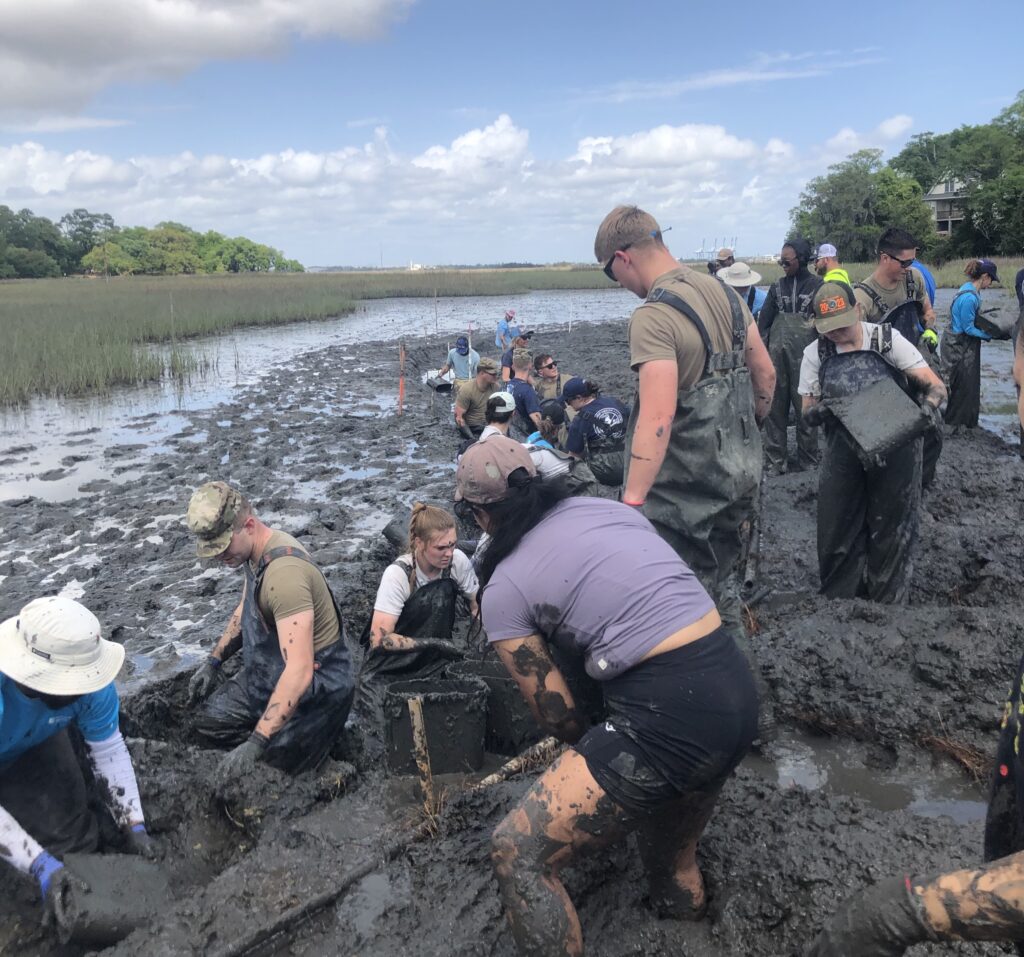
The Impacts
Thanks to the hard work of the SCORE team, their grant partners, and volunteers, there’s a new creek in town and parts of the marsh in this historic neighborhood are on their way to being restored. The banks of this new tidal creek have since been planted with Spartina grass, and the robust root systems will prevent this creek from washing away, and allow water flow to reach these parts of the marsh once again. Not only does this project restore habitats for many estuarine species such as fish, crabs, and snails, and create a buffer for future erosion, improve water quality, but it also helps restore the unique characteristics of this historic community located along the Ashley River.
Check out the Before and After!
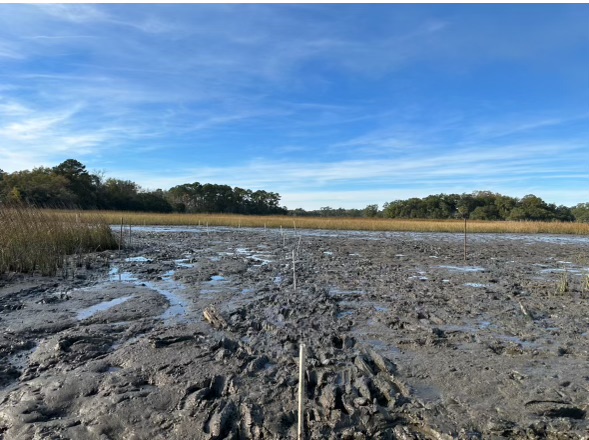
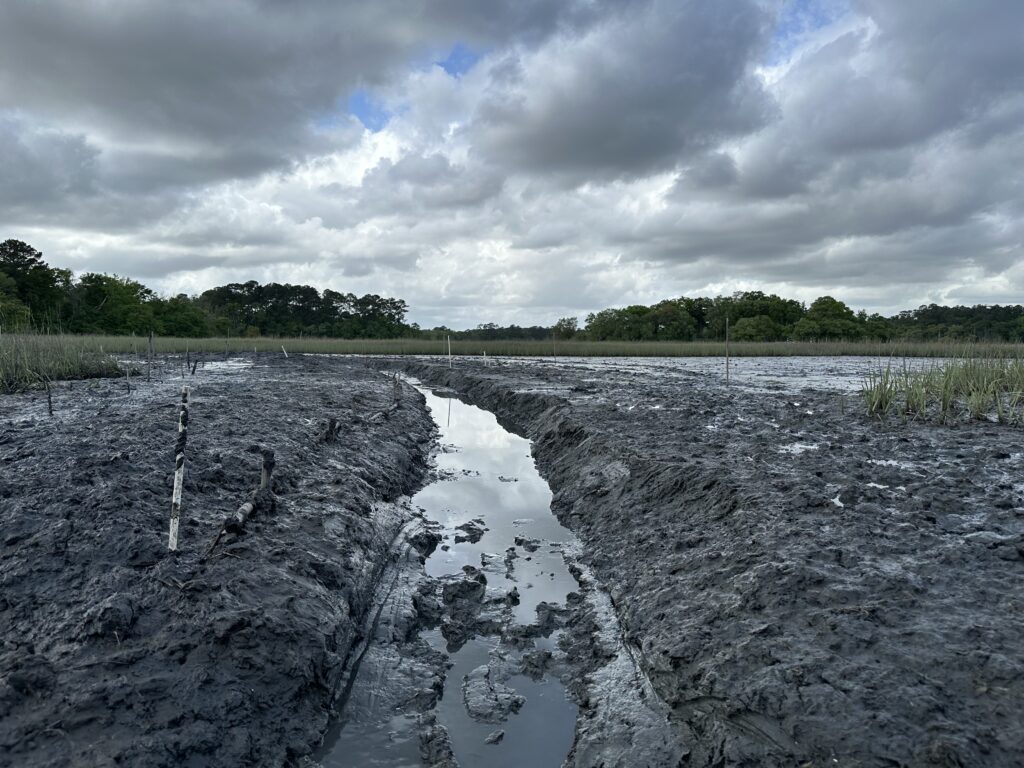
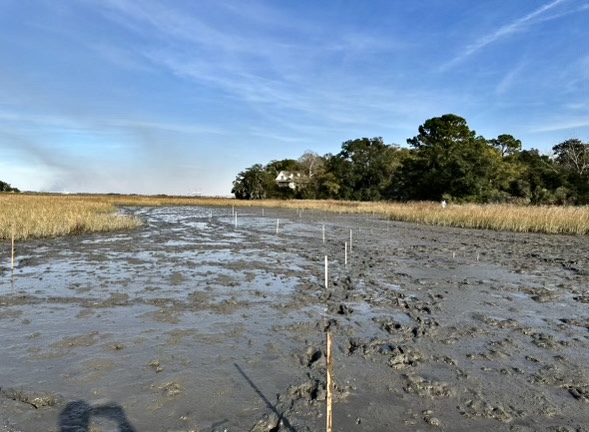
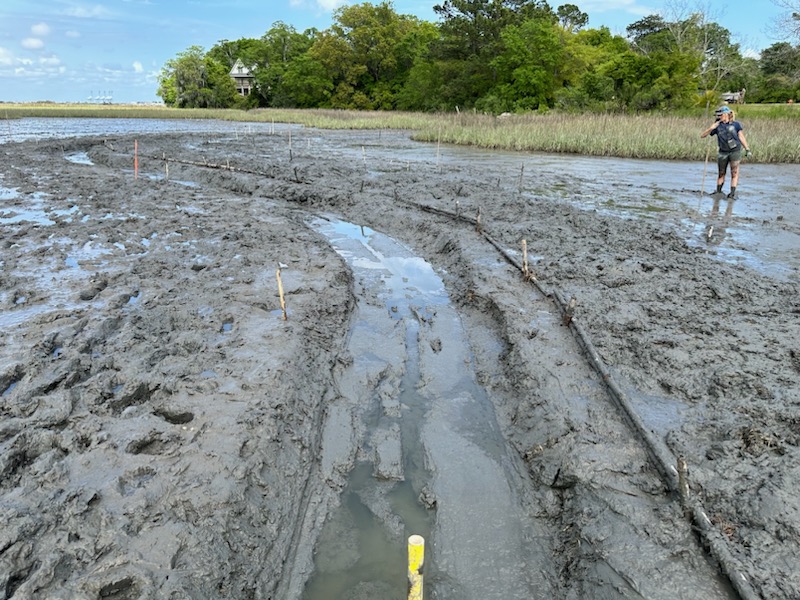
Check out the volunteers planting this area with Spartina!
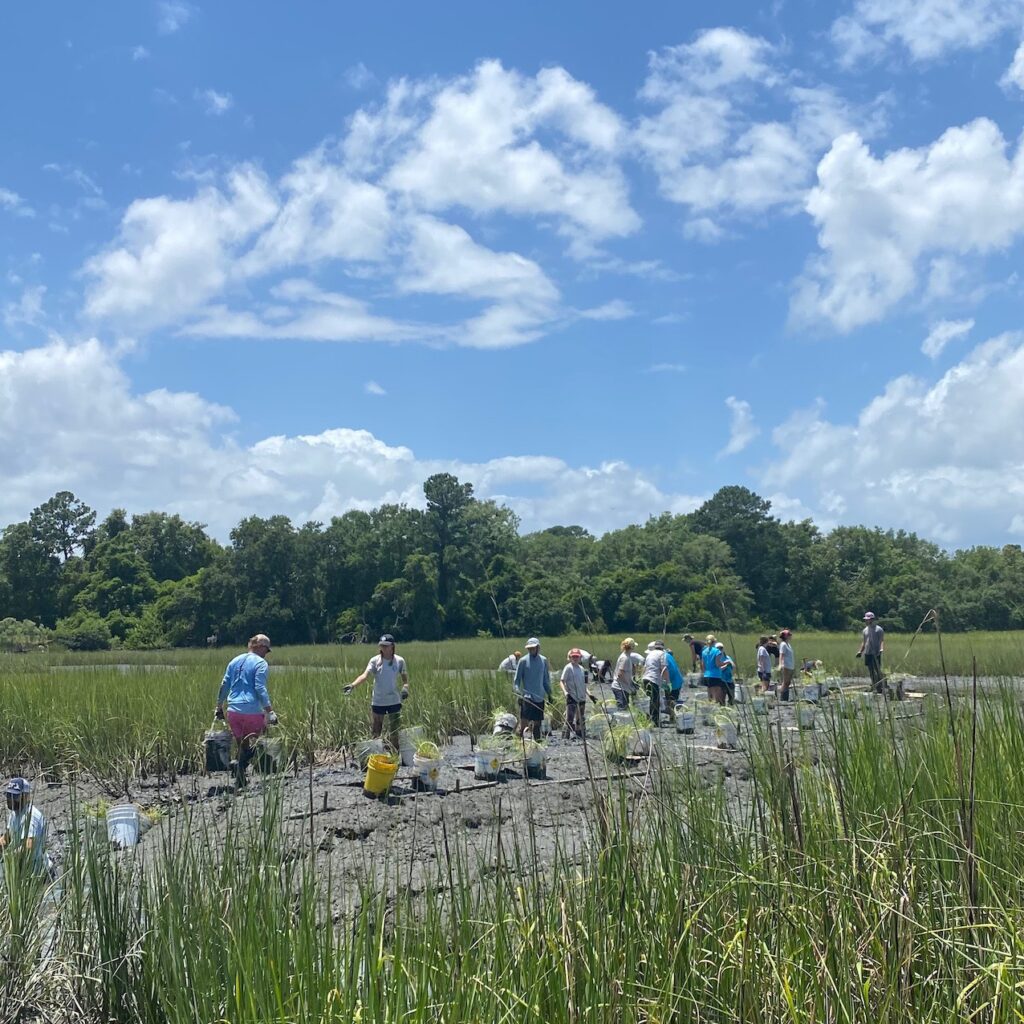
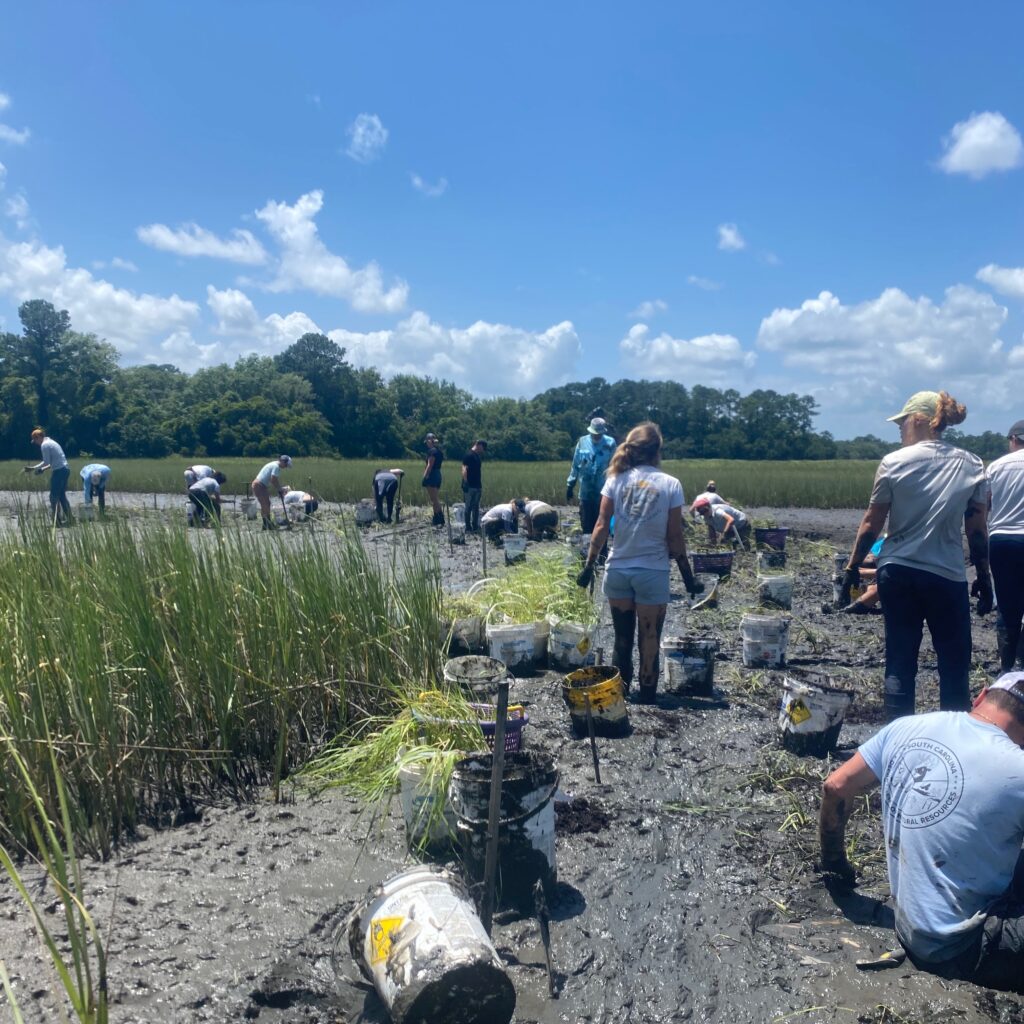
Ready to get your feet wet and restore your local waterways?
Click below for more opportunities with SCDNR SCORE and Charleston Waterkeeper!
Click below to watch the Instagram Reels:
Read the news articles:
Sources:
Kelly Lambert, Wildlife Biologist, SCDNR SCORE
Cheryl Carmack, Staff Scientist and Volunteer Coordinator, Charleston Waterkeeper (photos)

